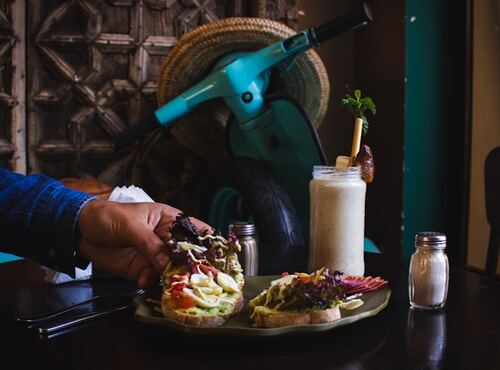Getting toddlers to eat healthy snacks can feel like an uphill battle. With short attention spans and evolving taste preferences, even the most nutritious snack might be met with resistance. However, with a bit of creativity, it’s possible to make snacks both engaging and healthy. By turning food into fun, you encourage toddlers to explore new tastes and develop positive eating habits early on. Below are practical ways to transform nutritious snacks for toddlers into enjoyable experiences.
1. Create Fun Shapes and Designs
One way to make healthy snacks more appealing is by presenting them in interesting shapes. You can use cookie cutters to transform fruits, vegetables, and sandwiches into stars, animals, or heart shapes. Toddlers are more likely to try foods that look playful and colourful. For example, cutting melon or cheese slices into fun shapes gives them a visual treat they’ll be excited to explore.
You can also arrange fruits or veggies to create smiley faces or simple pictures on a plate. A cucumber slice can become a car wheel, while a strawberry can act as the sun. This playful presentation makes snack time engaging and helps picky eaters approach healthy foods without hesitation.
2. Offer Snacks in Small Portions
Sometimes, toddlers feel overwhelmed when they see too much food on their plate, especially unfamiliar ones. Offering snacks for toddlers in bite-sized portions can make the experience less intimidating. A handful of berries or a small bowl of yoghurt with fruit toppings feels manageable and encourages toddlers to finish what’s in front of them.
Another trick is to use snack trays or muffin tins, filling each compartment with different items like cheese cubes, crackers, or carrot sticks. The variety of small portions gives toddlers the freedom to choose what they want to eat, promoting independence while ensuring they still get essential nutrients.
3. Involve Toddlers in Snack Preparation
Children are more likely to eat foods they help prepare. Simple tasks like spreading nut butter on toast, sprinkling seeds on yoghurt, or arranging fruits on a skewer can turn snack-making into a fun activity. Toddlers love the sense of control and accomplishment that comes with making their own snacks.
You can also make it a learning experience by talking about the colours, shapes, and textures of the ingredients. Involving them in these simple tasks not only encourages healthy eating but also helps develop fine motor skills. Plus, it gives toddlers a sense of ownership over their food, making them more willing to try what they’ve helped create.
4. Use Dips to Make Eating Fun
Toddlers enjoy dipping their food into sauces or spreads—it makes eating interactive and enjoyable. Healthy dips like hummus, yoghurt, guacamole, or peanut butter pair well with fruits, vegetables, or whole-grain crackers. Presenting dips alongside snacks for toddlers adds variety and makes nutritious foods more appealing.
The act of dipping encourages toddlers to try different foods without even realising it. Carrot sticks, cucumber slices, or apple wedges suddenly become exciting when paired with a tasty dip. Just be sure to offer age-appropriate textures and keep an eye on portion sizes to avoid messes.
5. Introduce Food Themes or Stories
Turning snacks into part of a story or theme adds an extra layer of fun. You could have a “rainbow snack day,” encouraging your child to eat a variety of colourful fruits and vegetables. Or create a “picnic at the zoo” with animal-shaped sandwiches, yoghurt cups, and grapes.
You can also tie snacks into your child’s favourite stories or characters. If your toddler loves animals, you could arrange snacks to resemble different creatures—like ants on a log (celery with peanut butter and raisins) or a butterfly made from orange slices. These playful themes help make snack time a special and memorable activity.
6. Use Fun Containers and Utensils
Sometimes all it takes to engage a toddler is a colorful container or fun utensil. Bento boxes, snack cups with animal faces, or spoons with cartoon characters can make eating much more exciting. Kids love novelty, so rotating between different snack containers can keep their interest alive.
Special snack plates with compartments encourage toddlers to explore a variety of foods at their own pace. Finger foods served with toothpicks or skewers (with blunt tips for safety) give them a new way to eat familiar items, making snack time feel like an adventure.
7. Celebrate Progress with Positive Reinforcement
Positive reinforcement plays a big role in encouraging toddlers to try new foods. Celebrate small achievements, like when your toddler finishes a snack they previously refused or tries something new. Offering praise, high-fives, or even small stickers helps them associate healthy eating with positive experiences.
Avoid using sweets as a reward, as this can create an unhealthy relationship with food. Instead, focus on building excitement around nutritious snacks for toddlers by turning the experience into a fun, low-pressure activity. The goal is to make snack time enjoyable rather than something they feel forced to participate in.
Conclusion
Making nutritious snacks for toddlers fun and engaging requires creativity and patience. Offering snacks in playful shapes, small portions, and colourful containers can turn healthy eating into an exciting adventure. Involving toddlers in snack preparation fosters independence and gives them a sense of accomplishment, while dips and food themes make the experience interactive.
With positive reinforcement and playful presentation, toddlers become more open to trying new foods and develop healthy eating habits. It’s important for parents to stay flexible—what works today may not work tomorrow. Keep experimenting until you find what clicks. When snack time feels like a fun activity, toddlers are more likely to embrace nutritious foods enthusiastically.




